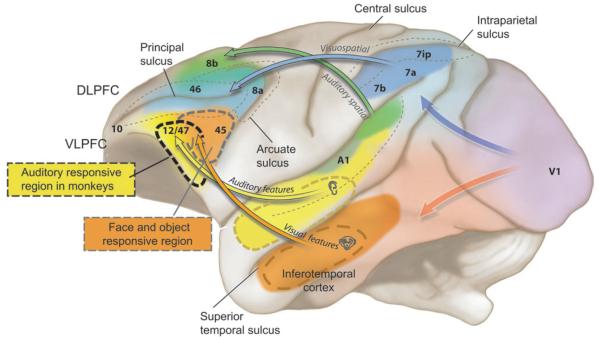Figure 1.
A schematic of the macaque brain is shown depicting the flow of auditory and visual information through the brain to its ultimate destination in PFC. Regions of the prefrontal cortex are color coded to match those of areas, that project to it. The DLPFC (shown in blue and green) suggested to be essential in spatial working memory receives visual afferents from parietal cortex areas 7a, 7b, and 7ip (shown in blue), which carry visuospatial information, whereas caudal auditory association cortex (green) projects to caudal and dorsal PFC areas 46, 8a, and 8b. VLPFC (orange and yellow areas 12/47 and 45) receive afferents from inferotemporal cortex (orange) carrying information about object features and auditory information from anterior auditory association cortex (yellow). The overlap of auditory and visual domains in VLPFC is indicative of later findings of multisensory processes.

